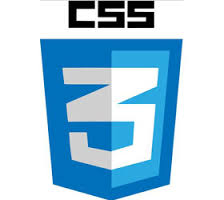Welcome to On Our Radar, a weekly round-up of news, trends and other cool stuff from the world of web development.
This week saw Firefox mark its tenth birthday. To celebrate Mozilla launched two new projects: the Polaris Privacy Initiative and the Firefox Developer Edition – a new version of Firefox that puts the browser’s developer tools front and center. Initial reviews of the browser “built for developers” were positive, although anyone expecting it to ship packed with brand-spanking new features might have been disappointed. And for those of you prone to nostalgia, you might like to remind yourself of ten of the most important milestones Firefox has reached since its debut in 2004.
In other news, Satya Nadella’s rapid reinvention of Microsoft continued as it was announced that they would be open-sourcing the entire .NET server core stack. Amazon meanwhile revealed a voice-driven home assistant for under $200 and the moon landing was proven real by Nvidia’s graphics experts who released the graphics re-creation software which lead them to this conclusion.
Interstellar
First up today is an introduction to parallax scrolling using the stellar.js library. For the uninitiated: parallax scrolling is when the background of a page moves at a different rate to the foreground when you scroll. Done properly, it can be used to achieve some really crazy effects.
Next we have an article on breaking the web with JavaScript, which concerns Firefox’s attempt to implement an ECMAScript 7 proposal for Array.prototype.contains.
Want to share common functionality between different JavaScript object types without without subordinating one type to another? Sounds like a perfect case for your friendly neighborhood mixin pattern.
Is your JavaScript not working? Perhaps you should consider using these five lesser-known functions of the Console object to help you debug.
Hard as it is to believe, it is almost eight years since jQuery was released. This article looks at what’s coming in jQuery 3.0 and what that means for the likes of you and me.
Here’s a quick tip on feature detection done properly.
And this is how cats work in 13 lines of JavaScript.
Buzzword of the Week: rem

Nothing to do with Michael Stipe, rem is a unit of measurement introduced in CSS3. Rem stands for “root em” and, unlike the em unit (which is relative to the font-size of its parent), the rem is relative to the font-size of the root element (which is almost always the <html> element).
Curious to find out more? Then be sure to read 7 CSS Units You Might Not Know About.
calc() is a CSS function can be used anywhere a <length>, <frequency>, <angle>, <time>, <number>, or <integer> is required. Here’s a great guide to layout math with CSS and how you can employ calc() to solve some tricky problems.
Want to write write DRY, less repetitive CSS? Maybe helper classes are something you should be looking at.
CSS counters keep a running tally of things in CSS (no JavaScript needed). As an added bonus, they enjoy almost universal browser support. Nifty! Very Nifty!
Describing herself as “a CSS Grid Layout module superfan” SitePoint author Rachel Andrew recently spoke at CSSconf EU on this very subject. This talk is well worth a watch.
MV* Frameworks:
This week, the JavaScript Jabber panelists discussed MV* frameworks with Craig McKeachie. The discussion centered on which of the many frameworks developers should invest their time in, as well as the future of these.
This topic is all the more interesting in light of the recent furor surrounding the announcement of Angular 2.0 and subsequent attempts to placate irate developers.
The road to Ember 2.0 didn’t create as much uproar, but makes for interesting leading nonetheless, as does this article on the evolution of Ember.
Here is a look at the top mistakes developers make Using Ember and Rails, why Ember is for Designers and how to learn AngularJS by building a GMail clone.
Bonus link: Craig McKeachie (see above) also wrote about MV* frameworks for SitePoint recently in a post entitled the Anatomy of a JavaScript MV* Framework.
Go

In keeping with all these anniversaries (ten years FireFox, eight years jQuery) this week also marked the fifth anniversary of the launch of the Go Project (the statically-typed programming language developed at Google). Their official blog post titled “Half a decade with Go” looks back at how the language has evolved over the past five years.
To celebrate 5 years of Go, over the coming month the Gopher Academy is publishing a series of articles by prominent Go users. Go check them out! (groan)
Trying Out Go for the First Time is an interesting read about a front end developer and his first impressions of the Go programming language.
If you’re up on your programming languages, then you’ve likely heard of Rust, too. Rust and Go (why does that make me think of shampoo?) is a blog post by Adam Jacob (CTO at Chef) which compares both languages.
Want to dabble in Go? Here are some introductory resources for Go to get you started.
Or, if you prefer something more substantial, the Little Go Book is a free introduction to the language available in various formats.
Finally, here is the long awaited talk by Brad Fitzpatrick (one of the Go team) on the current state and future of Go.
P.S. If you have any Go problems, remember that SitePoint forums has a Golang category.
So that’s everything for this week. Thanks for joining us.
I’ll leave you with the shocking news that Twitter is about to make some major changes to its service, as well as a report of a German cloud company which is offering free heat if you have room for some of its servers.
So which links caught your attention? Do you want to weigh in on the Ember vs Angular debate? Have you tried out Firefox’s developer edition? How did you find it? Either way, we would love to hear your thoughts.
Also, if you have any problems implementing anything covered here, or just want to discuss it some more, SitePoint’s forums are a great place to visit (you can sign in with your Google, FaceBook, Twitter, GitHub or Yahoo account).
 James Hibbard
James HibbardNetwork admin, freelance web developer and editor at SitePoint.
